Other British Regiments/Corps Stationed in Colonial Australia.
Most of the British regiments stationed during colonial times have been featured in this blog previously. Thanks to Ronald Montague’s book, I now am aware of some others.
Royal Engineers
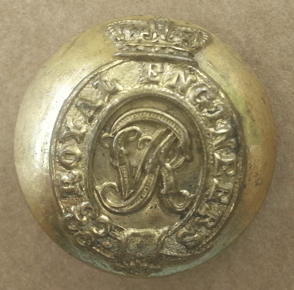
Backmark “Smith & Wright Birmingham” which dates 1861-1888.
Officers were stationed in the colonies from 1835, and other ranks from 1857, until the withdrawal of British regiments in 1870.
https://www.nam.ac.uk/explore/corps-royal-engineers
http://www.austbuttonhistory.com/18th-june-2022/
Royal Corps of Sappers and Miners
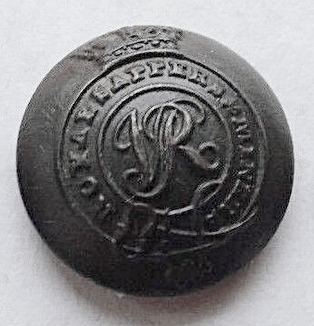
For sale on Ebay: 1854 Royal Sappers & Miners Button, found at site of Crimean British war camp.
Serving in Australia from 1835, Sappers and Miners performed duties including building and demolition for military purposes. The Corps served under officers of the Royal Engineers. In 1856 they were amalgamated with the Royal Engineers.
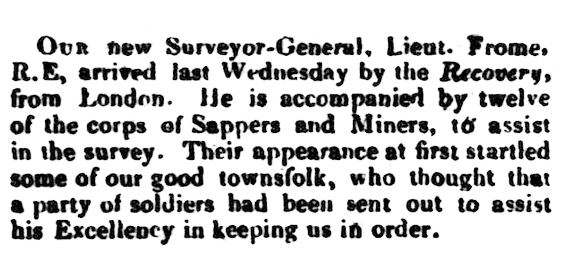
Southern Australian (Adelaide), 25th September 1839 page 3.
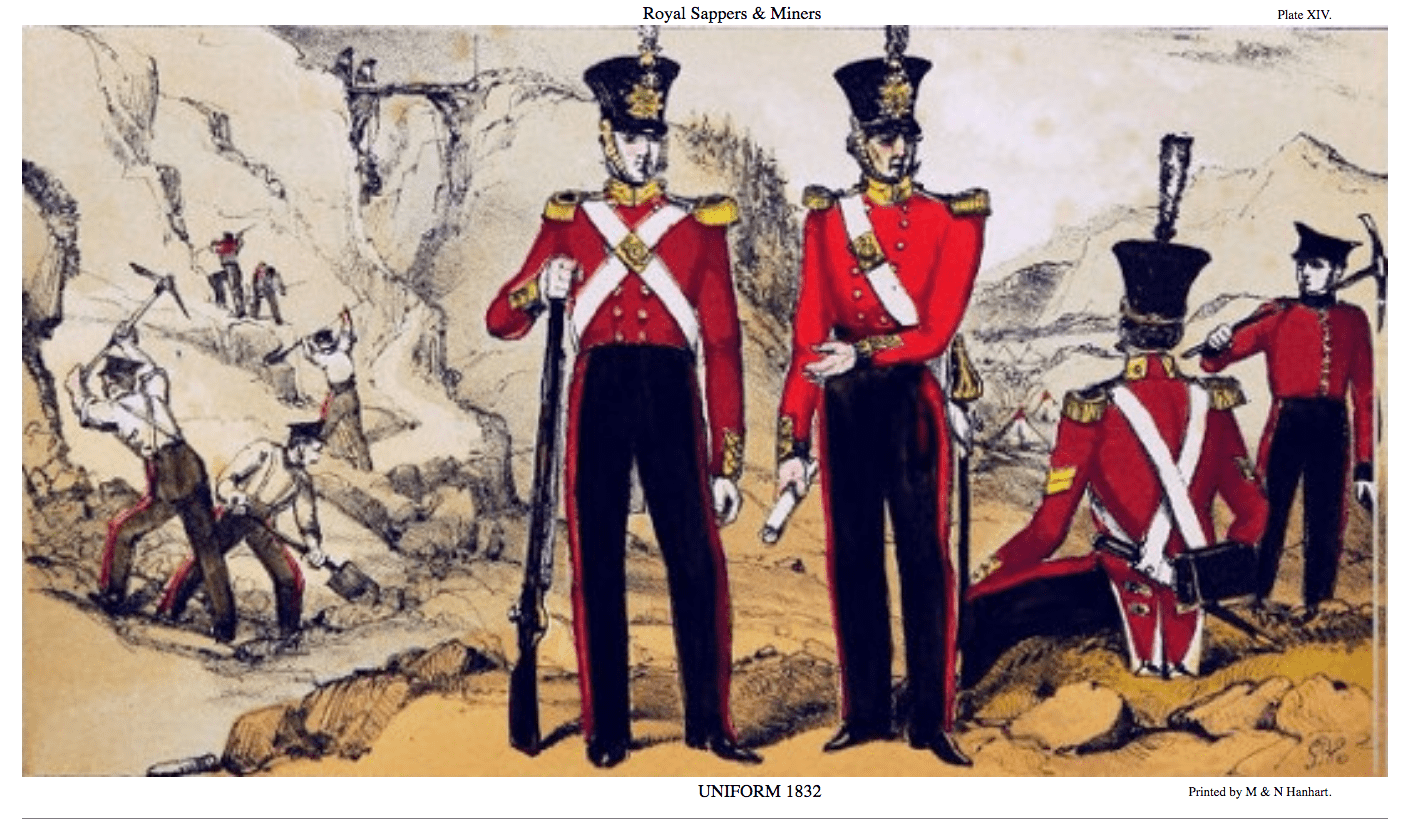
From the ebook reprinting of an historical volume: https://www.gutenberg.org/files/55776/55776-h/55776-h.htm#plateXIV ” (In 1832) A material alteration was made in the clothing this year by changing the colour of the coatee from scarlet to the infantry red, and the style and decoration of the dress were also modified, to correspond with the form of lacing adopted generally in the line. The coatee of the bugle-major remained in all respects the same as before. The buglers also retained the scarlet, but the style of wearing the lace accorded with that of the privates. For the working dress, a round jacket with bell buttons bearing the corps device, was established, instead of the jacket with short skirts. Of both uniform and working trousers, the colour was changed from light blue to dark Oxford mixture; but the uniform trousers as formerly, were much finer than the working ones. The red stripe down the outer seam was two inches broad on the former, and half an inch wide on the latter. Laced boots were also introduced this year in place of the short Wellingtons, issued for the first time in 1825. The leather stock hitherto supplied by the public, was now made an article of necessaries and provided at the cost of the soldier.” … (In 1837) This year the colour of the coatee was changed from red to scarlet—Plate XV., and the huge Kilmarnock woven cap was superseded by a neat superfine blue cloth cap, stiffened, with peak and chin-strap. The sergeants were distinguished by black oak-leaf bands and gilt ornaments, comprising a grenade, encircled by a laurel wreath, and surmounted by a crown and three chevrons. The other non-commissioned officers wore chevrons according to their ranks. The oil-skin chaco of the staff-sergeants was put aside for a forage-cap, with a gold oak-leaf band and gilt ornaments of a crown within a laurel-leaf.”
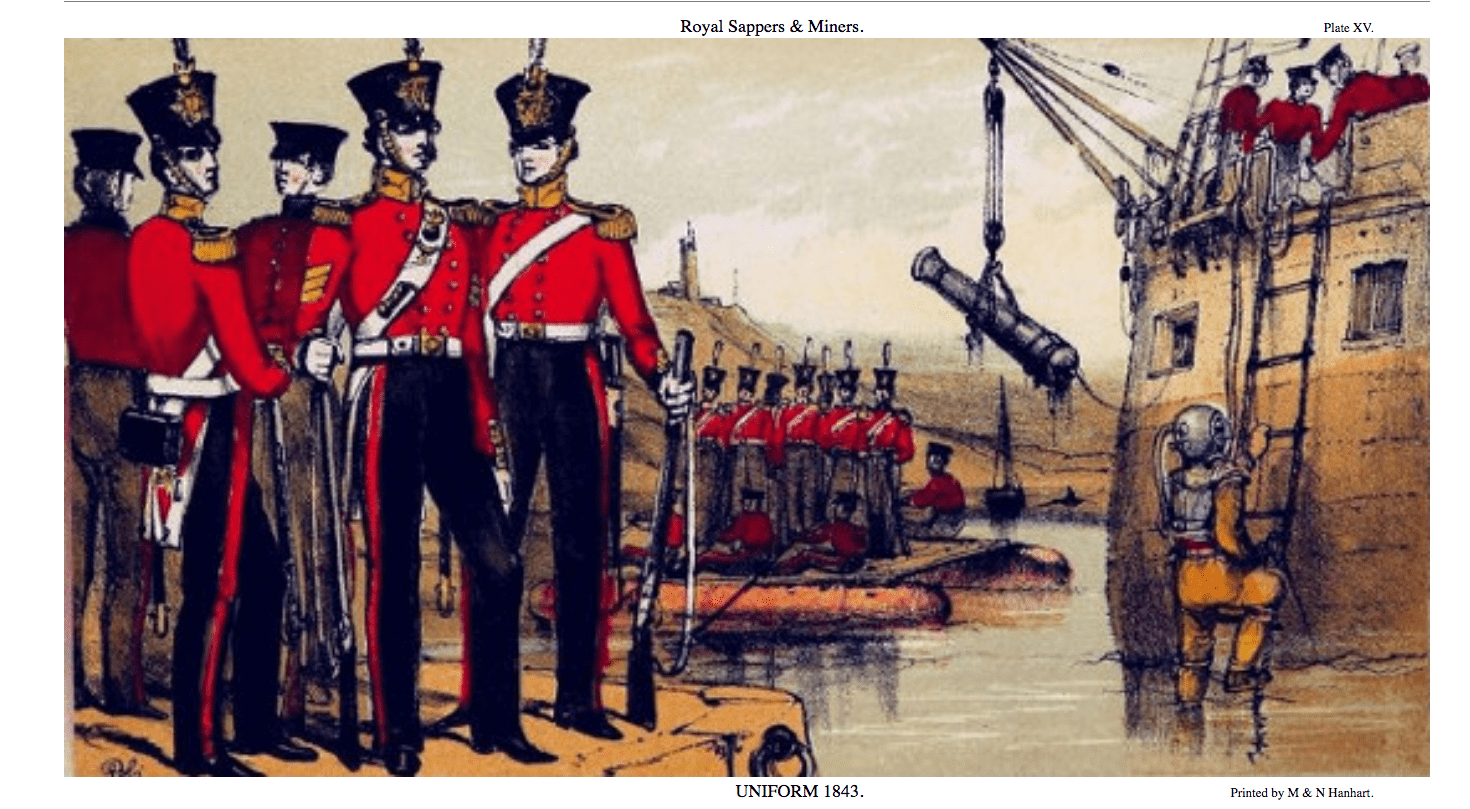
Royal Staff Corps
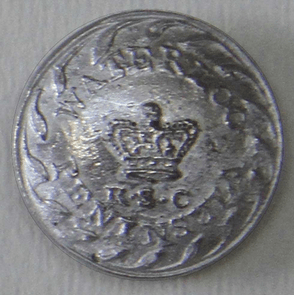
A reproduction Royal Staff Corps button from 1816-1830. With permission from Historical Twist.
These served in Van Diemen’s Land and New South Wales between 1823 until 1829. According to the 1829 Tasmanian Almanack, one officer and 20 privates serving in the colony. They were responsible for military engineering. When disbanded in 1837, many personnel transferred to the Sappers or the Engineers.

Hobart Town Gazette and Van Diemen’s Land Advertiser, 29th July 1825 page 3. An artificer would have been an expert in mechanical devices. They became the Royal sappers and Miners in 1812.
